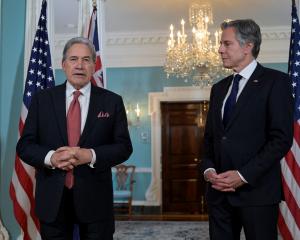Action is needed on the STV system before the next local body elections, writes Warwick Johnson.
The single transferable vote (STV) system has been used in Dunedin’s past three local body elections. It has been well publicised in this newspaper and elsewhere and appears to have gained favour among candidates and voters.
However, there are
problems that need to be highlighted now so they can be addressed over the next three years. Those running the election need to greatly improve the available information on how the system works and how to vote. Work should start now.
STV is quite different from the system it replaced, first past the post (FPP), but many citizens have not been able to undo the FPP mentality. Because of that mindset, journalists, media commentators, candidates and members of the voting public made many inaccurate statements during the past election campaign and made ill-informed judgements after it.
Candidates and commentators continued to talk about "splitting the vote". Regardless of how many candidates there are, and how many of them hold similar political leanings, there is no vote-splitting in an STV campaign. Two candidates with similar manifestos will not cancel each other out and let a third candidate through. The permutations are too complex to lay out here, but the bottom line is that the winners are the candidates most preferred by the electors. To talk about vote-splitting is an example of old-fashioned FPP mentality.
The actual process of voting in an STV election continued to baffle many voters, and probably deterred some. Rank ordering, not ticking boxes, is the key concept. There is no point in numbering down beyond those candidates you think are fit for office.
Election officials need to consult with social media specialists and develop some good graphic video footage of how to do it — the hard-to-read booklets that come with the voting papers are not good enough.
A misconception that arose once again, as it has after each STV election, was that each candidate earned a precise number of votes, and that the relative positions of various candidates could therefore be accurately compared, as they can be in FPP elections. In STV there is no final number — the process simply sorts out the preferred mayoral candidate and, in the case of the Dunedin City Council, the 14 most preferred council candidates. The numbers published, and frequently labelled "final", are just the totals reached at the point in the process when the successful candidates cannot be beaten.
This misunderstanding about numbers also led to faulty comparisons of results between elections, and to meaningless complaints that candidates were elected with fewer than 50% of the vote.
A more general and ongoing problem with STV is that the system is seen by many people to be too complex to understand. This seems often to lead to mistrust, and sometimes to the idea it produces perverse results or is in some way undemocratic.
There is, in fact, a great deal of information about New Zealand’s version of STV available in the public domain. Clearly it is accepted by experts that the system does what it is designed to do. Just as with many other computer-controlled processes we live with every day, we have to trust the computer calculations and the decisions of the experts who write the software and test it.
But citizens want to know if there is any audit process to check that the system works the way it is supposed to. There is no way for an ordinary voter, or even official scrutineers, to do this. It would take thousands of hours to work manually through all the calculations necessary to validate the results produced by the software. The whole electoral process is run by a private company. Who audits the electoral outcomes? How is the software validated?
What happens if a recount is called for? Does the same software produce the same outcome? It should, if the inputs are the same. If it doesn’t, how do we know whether the first calculation or the second, or either, is correct? What variables are there that could give a different outcome in a recount?
Once votes are returned, the process of counting starts with the scanning of voting papers. How do we know that the scanning process that turns our pencil marks into digital information is accurate? There are many different ways of writing numerals, and we have never been assured by any quality control process that the scanning is accurate 100% of the time.
There needs to be a new mindset around the publicising of the STV voting system.
If we believe it’s the best and fairest way of electing our local body officials then work needs to start now in preparing a campaign to gain the confidence of the public by giving them better information.
- Warwick Johnson was secretary-treasurer of the now disestablished incorporated society ‘‘Greater Dunedin’’ and maintains a close interest in local body and national politics.












